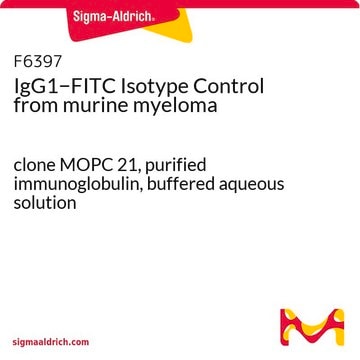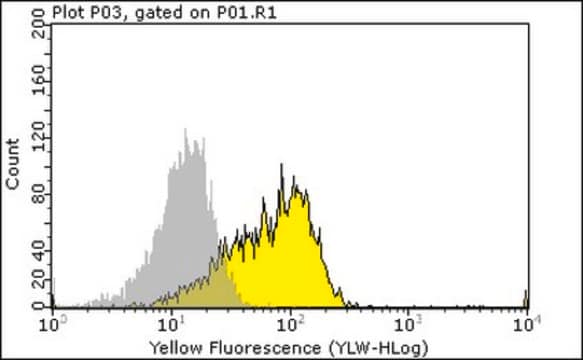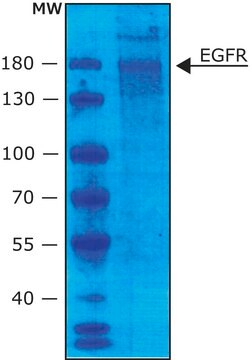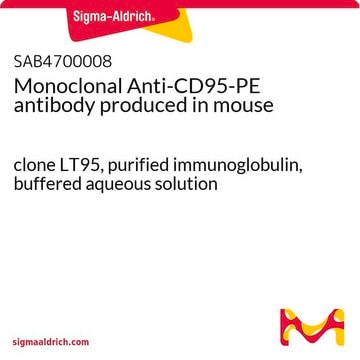F4424
Monoclonal Anti-Fas
clone DX2, purified from hybridoma cell culture
Sinónimos:
Monoclonal Anti-Fas (CD95/Apo-1) antibody produced in mouse, Anti-Apo-1, Anti-CD95
About This Item
Productos recomendados
origen biológico
mouse
conjugado
unconjugated
forma del anticuerpo
purified from hybridoma cell culture
tipo de anticuerpo
primary antibodies
clon
DX2, monoclonal
descripción
fluorescence intensity and maximum percentage positive similar to that obtained with saturating antibody levels
formulario
buffered aqueous solution
uso
10 μL sufficient for 1 × 106 cells
reactividad de especies
human
técnicas
flow cytometry: 4-20 μg/mL using cultured human Burkitt’s lymphoma Raji cells
microarray: suitable
isotipo
IgG1
Nº de acceso UniProt
Condiciones de envío
dry ice
temp. de almacenamiento
−20°C
modificación del objetivo postraduccional
unmodified
Información sobre el gen
human ... FAS(355)
Descripción general
Especificidad
Inmunógeno
Aplicación
Western Blotting (1 paper)
- immunoblotting
- flow cytometry
- the induction of apoptosis
Acciones bioquímicas o fisiológicas
Forma física
Cláusula de descargo de responsabilidad
Not finding the right product?
Try our Herramienta de selección de productos.
Código de clase de almacenamiento
10 - Combustible liquids
Clase de riesgo para el agua (WGK)
WGK 3
Punto de inflamabilidad (°F)
Not applicable
Punto de inflamabilidad (°C)
Not applicable
Equipo de protección personal
Eyeshields, Gloves, multi-purpose combination respirator cartridge (US)
Certificados de análisis (COA)
Busque Certificados de análisis (COA) introduciendo el número de lote del producto. Los números de lote se encuentran en la etiqueta del producto después de las palabras «Lot» o «Batch»
¿Ya tiene este producto?
Encuentre la documentación para los productos que ha comprado recientemente en la Biblioteca de documentos.
Artículos
Quantitative and qualitative western blotting to validate knockdown by esiRNA.
Nuestro equipo de científicos tiene experiencia en todas las áreas de investigación: Ciencias de la vida, Ciencia de los materiales, Síntesis química, Cromatografía, Analítica y muchas otras.
Póngase en contacto con el Servicio técnico







